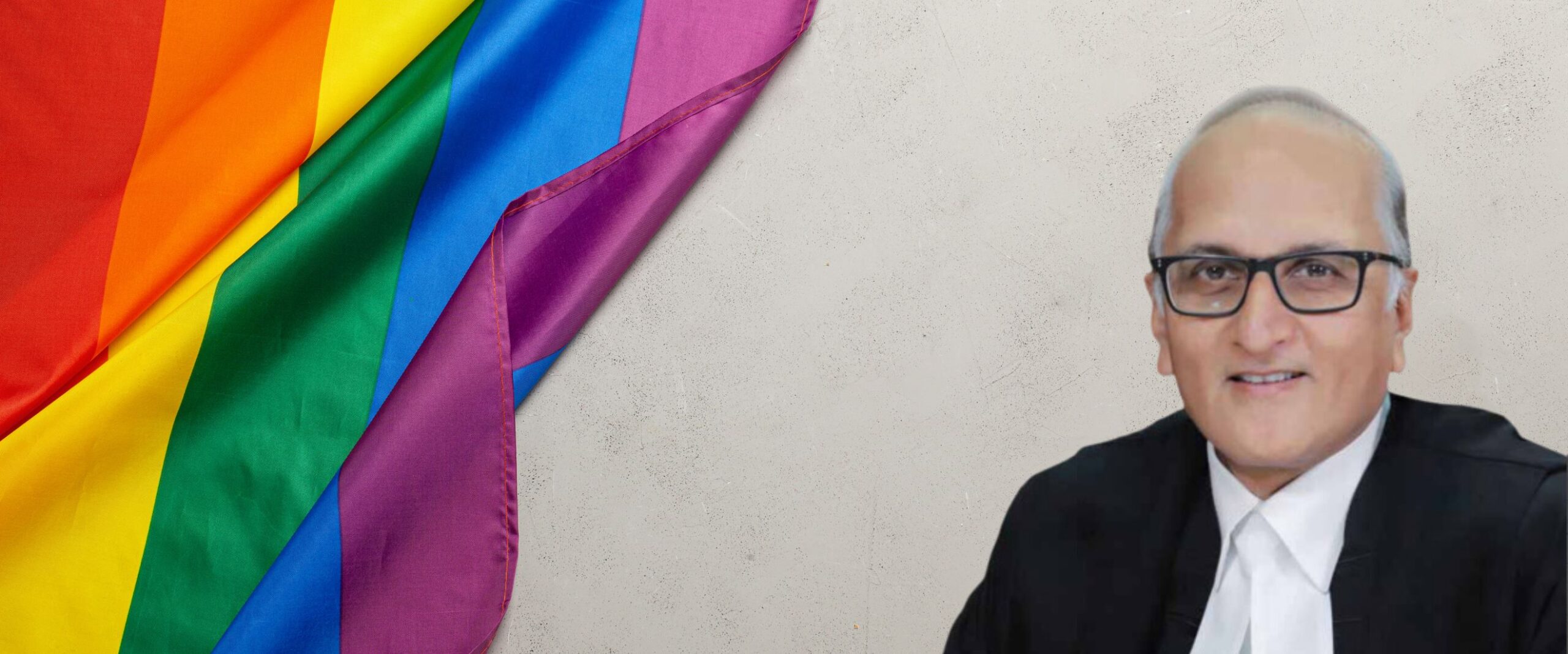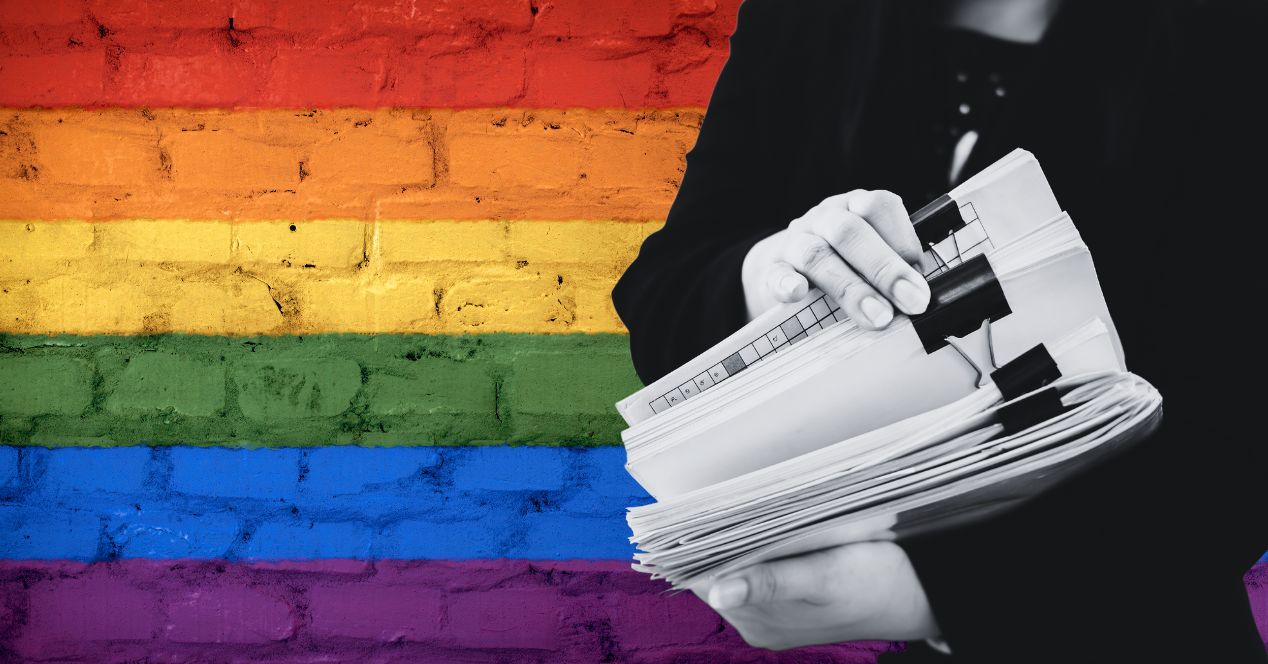Analysis
Marriage Equality Judgement: Overlooking fundamental rights
Justice Bhat’s refusal to uphold the directions to protect LGBTQIA+ persons seems inconsistent with his own understanding of Part III Rights

The verdict of the Supreme Court in Supriyo v Union of India denying the right to marry to the LGBTQIA+ community has been disappointing. There were four opinions among the five judges, with points of convergence and dissent. The Court was unanimous in finding that there is no constitutional right to marry and that the Special Marriage Act, 1954, could not be interpreted to include the right of LGBTQIA+ persons to marry.
In this article, I want to narrowly focus on Justice Bhat’s refusal to join himself with the minority—thereby potentially turning it into a majority—in issuing directions to ensure protection for queer couples from violence and discrimination.
This is in addition to his refusal to mandate a High-Powered Committee to examine the rights which flow out of relationships as well as his refusal to read down the Central Adoption Resource Authority guidelines to allow unmarried couples to adopt. Justice Bhat’s own directions rendered Chief Justice D.Y. Chandrachud’s specific directions on the protection of sexual minorities non-binding—a minority opinion to perhaps revisit another day.
His refusal to attach his name to these bare minimum directions rang especially hollow after the majority opinion, authored by him, went to great lengths to assert that the Court is alive to the queer community’s “feelings of being left out.” The majority opinion bases its refusal to grant specific reliefs on the Court not being “an appropriate forum” but this reasoning stands at odds with the logic applied by Justice Bhat just three days later in a matter related to manual scavenging.
Rights rooted in the constitutional text
The furthest the majority was willing to go was to recognise a “right to relationship” under Article 21. This included the right of LGBTQIA+ persons to “choose a partner, cohabit and enjoy physical intimacy with them, to live the way they wish to, and other rights that flow from the right to privacy, autonomy and dignity.” The majority also recognised that the State is bound to extend protection when this right is threatened by violence.
However, when it came to specific guidelines to positively recognise and enforce these rights, Justice Bhat turned the other way. For him, “marriage or recognition of any such relationship, with such status, cannot exist in the absence of statute.”
Anticipating this line of reasoning, the petitioners had relied on the fact that the Court had previously issued directions in cases like Common Cause, Vishaka and NALSA, where there were no express statutory stipulations. But Justice Bhat was at pains to distinguish each of these precedents from the circumstances of Supriyo. As far as Common Cause was concerned, there were Law Commission recommendations which formed the “additional basis for the Court’s discretion and the final guidelines.” With respect to Vishaka, he said that “the Union of India was actively involved and in fact had given suggestions at the time of formulation of guidelines.” And when it came to NALSA, Justice Bhat reasoned that the Court was addressing the “acute concern wherein the personhood of transgender persons itself was not recognized.”
But the real source of the directions in the above cases was their rooting in the constitutional text, similar to the way the “right to relationship” has been read into Article 21. Even if the State was not actively involved in formulating a relief in Supriyo and even if there were no Law Commission recommendations, the rights that flow out of relationships, at the very least, have the same constitutional sanction as the right to personhood of transgender persons (which was at issue in NALSA). The judiciary is meant to function as a countermajoritarian institution, and the court’s responsibility to adjudicate on the violation of fundamental rights cannot be shrugged aside because the government fails to cooperate with the petitioner.
Chief Justice Chandrachud, in his minority opinion, was unequivocal in declaring that relationship rights flowed out of Articles 21, 19(c) and 25. For the minority, the fact that there is no statute is not of consequence, because the right to be recognised in a relationship is a dimension of these constitutional provisions. The minority opinion is clear that the bonds or relationships “nourish the emotional and spiritual dimension of our humanity and are important in and of themselves.”
Though Justice Bhat recognises a right to relationship within Article 21, he fails to appreciate how being in a relationship of a non-normative kind or forming what CJI Chandrachud called “atypical families” could render precarious the enjoyment of fundamental rights. This inability to understand the constitutional interests implicated in the idea of an “intimate association” meant that Justice Bhat did not join the minority in issuing directions to address discrimination.
It is not that the directions were toppling a statutory scheme or reaching areas where the Court has not been asked to go. They were fundamental to ensuring the protection of a community that often lives under a pall of fear due to the State’s abdication of its constitutional responsibility.
“Ensur(ing) the queer community is not discriminated against because of their gender identity or sexual orientation”; “Establish(ing) and publicis(ing) the availability of ‘safe houses’ or Garima Grehs in all districts to provide shelter to members of the queer community who are facing violence or discrimination”—these were a couple of the directions in the minority opinion. Additionally, the police was directed to ensure that queer couples are not harassed by summoning them to the station or interrogated about their gender identity or sexual orientation. The police was also asked not to force queer persons to return to their natal families. In sum, these directions were the bare minimum, informed by the lived experience of queer persons in India.
The empathetic judgement in Balram Singh
And yet, Justice Bhat demurred. What made it harder to accept his objections was his remarkably empathic judgement just three days later in Dr. Balram Singh v. Union of India. There, he authored a judgement laying down directives to ensure implementation of the Prohibition of Employment as Manual Scavengers and their Rehabilitation Act, 2013. In this case, the petitioner had asked the Court to take measures to ensure the implementation of the Act and to undertake a broader reading of the definition of “manual scavenger.”
In that case, Justice Bhat said that the statute prohibiting manual scavenging is “not a regular statute: it is emancipatory in character and is a manifestation of the constitutional code of upliftment.” The fact that the Act has remained a dead letter was “disquieting” to him and he noted that the “constitutional scheme does not approve of a situation where parliamentary enactments are rendered dead-letter by executive inaction.”
The much-needed interpretative leap which Balram Singh takes is to interpret the non-provision of minimum protective gear and cleaning devices to those in hazardous employment as “forced labour” and “prohibited under the Constitution” in Article 23. Justice Bhat reads the statutory requirement to provide “protective gear and cleaning devices” as “not mere statutory rights or rules, but “entitlements.”
While relying on the “liberative nature of the statue coupled with the object of Article 17 and 23,” the judgement declares that entitlements must be given to the “families of those persons who died while working in sewers or septic tanks.” The reason for this was not any existing statute but because “the entire family would be rendered without a bread-winner.” The judgement goes on to say that the “dignity of the individual, guaranteed by law under Article 21, must be ensured through rehabilitative processes.”
Other specific directions issued in Balram Singh included the payment of Rs 30 lakhs as compensation for sewer deaths to dependents (increased from 10 lakhs) and the setting up of scholarships to ensure that dependents of sewer victims can be educated meaningfully. The government was also directed to set up a portal and dashboard containing relevant information about sewer deaths, injuries and the status of compensation disbursement.
Evidently, Justice Bhat was moved by the plight of manual scavengers. He is able to translate his sense of horror into a series of remarkable judicial orders which are meant to goad the government into action. This result was achieved through an expansive reading of the fundamental rights in the Constitution.
That’s why Justice Bhat’s plea of his hands being tied by the need to be “constitutionally sound” strikes an especially dissonant note in Supriyo. If he was happy to throw “caution to the wind” and mould a series of welcome reliefs in Balram, what was preventing him from relying on the constitutional scheme and lending his voice to a set of directions that could potentially guarantee some basic rights for the LGBTQIA+ community? Surely, non-heterosexual persons are deserving of the same level of constitutional solicitude and empathy that we know Justice Bhat is capable of.
As things stand, many of the persons affected by the judgement in Supriyo v Union of India remain doubly disappointed by Justice Bhat’s majority opinion.
As for Justices Chandrachud and Kaul’s dissents, it’s surely not the last we’ve heard of them. Justice Khanna, in his famous dissent in ADM Jabalpur (1976), had invoked the words of Charles Evan Hughes, the former Chief Justice of the US Supreme Court:
A dissent in a court of last resort is an appeal to the brooding spirit of the law, to the intelligence of a future day, when a later decision may possibly correct the error into which the dissenting judge believes the court to have been betrayed.
One hopes that the future day dawns sooner rather than later.
Arvind Narrain is a lawyer, writer and visiting faculty at Azim Premji University and the National Law School of India University.




